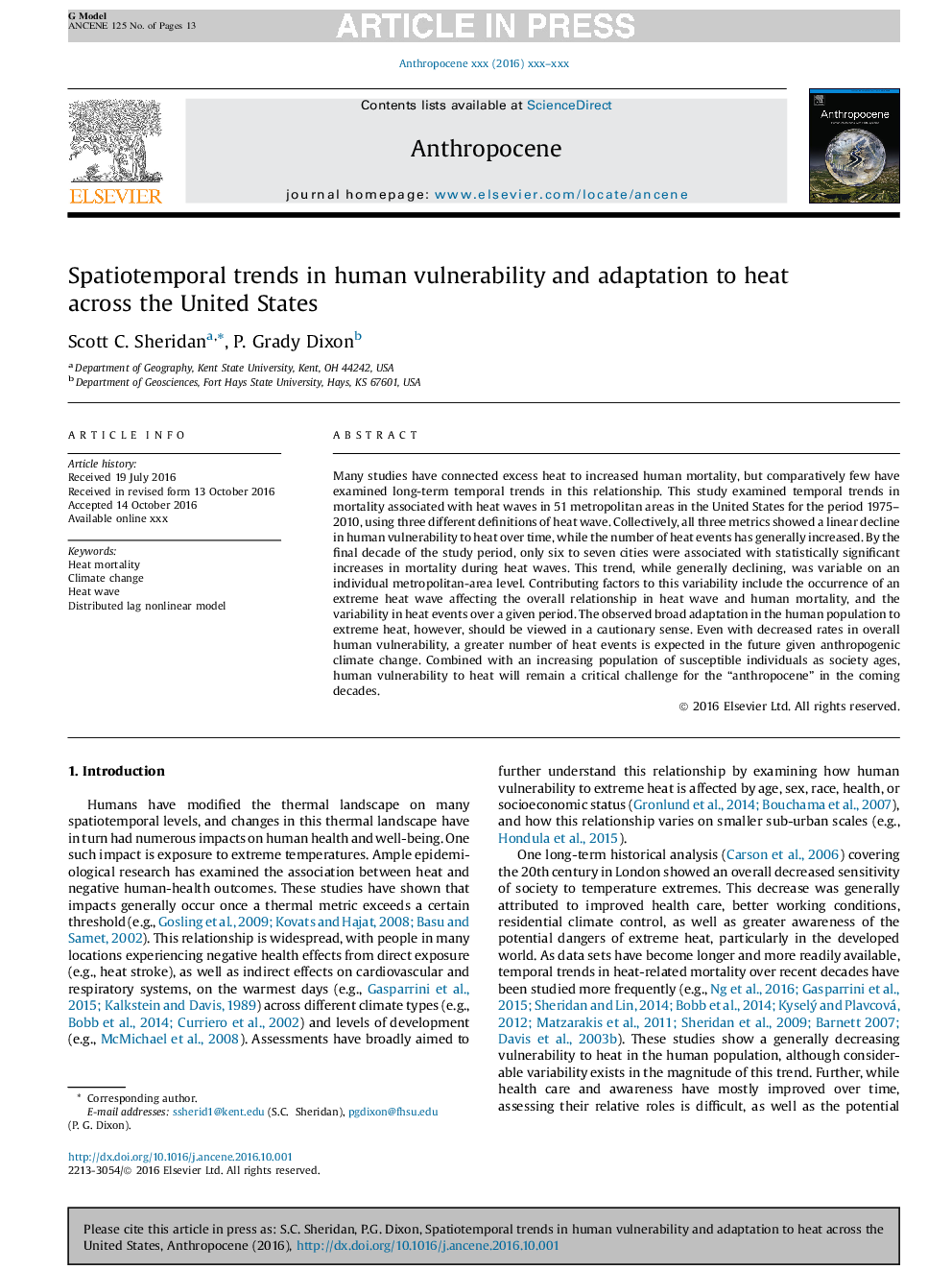| Article ID | Journal | Published Year | Pages | File Type |
|---|---|---|---|---|
| 8867196 | Anthropocene | 2017 | 13 Pages |
Abstract
Many studies have connected excess heat to increased human mortality, but comparatively few have examined long-term temporal trends in this relationship. This study examined temporal trends in mortality associated with heat waves in 51 metropolitan areas in the United States for the period 1975-2010, using three different definitions of heat wave. Collectively, all three metrics showed a linear decline in human vulnerability to heat over time, while the number of heat events has generally increased. By the final decade of the study period, only six to seven cities were associated with statistically significant increases in mortality during heat waves. This trend, while generally declining, was variable on an individual metropolitan-area level. Contributing factors to this variability include the occurrence of an extreme heat wave affecting the overall relationship in heat wave and human mortality, and the variability in heat events over a given period. The observed broad adaptation in the human population to extreme heat, however, should be viewed in a cautionary sense. Even with decreased rates in overall human vulnerability, a greater number of heat events is expected in the future given anthropogenic climate change. Combined with an increasing population of susceptible individuals as society ages, human vulnerability to heat will remain a critical challenge for the “anthropocene” in the coming decades.
Related Topics
Physical Sciences and Engineering
Earth and Planetary Sciences
Atmospheric Science
Authors
Scott C. Sheridan, P. Grady Dixon,
